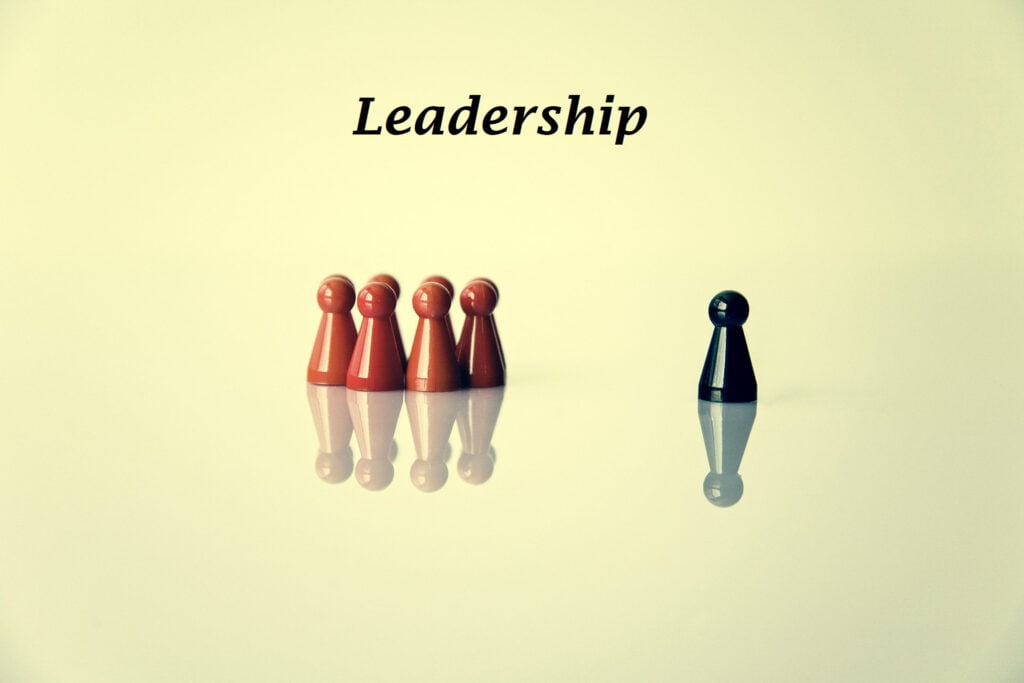Procurement plays a significant role in every business organization, simply procurement can be defined as the process of acquiring goods and services to accomplish business goals and objectives. In this article, we discuss critical areas of procurement such as the meaning of procurement, the importance, procurement process, different types of procurement, procurement stages, and the components and principles of procurement.
What is procurement
Considering the meaning of procurement, it can be defined as the process comprised of sourcing, acquiring, and making payments for goods and services. Procurement is vital in every business organization because business entities must purchase goods or solicit services. When an organization can manage its procurement function efficiently, it may lead to an increase in its profitability.
Importance of procurement in business
As mentioned, procurement plays a significant role in every business organization. And it is comprised of a range of activities such as sourcing, negotiating, making payments, tracking supplies, and maintaining records. Thereby, the management of a company needs to consider its procurement process as a significant process. In Most of the time, the procurement process is dictated by company rules and regulations and centralized by the Accounts department. Considering the importance, this process plays a major role in acquiring the right goods for the business to operate smoothly. Here are some important factors about procurement.
Its helps cost saving: with the procurement, the business entity is able to obtain required goods at reasonable prices. This can be accomplished through sourcing suppliers, price negotiation, and creating contracts with suppliers. With the use of effective strategies, there are significant cost savings can be seen within the organization.
Risk Management: business entities can reduce the risks associated with supply chain operations by improving supplier relationship management. A strong supplier relationship ensures that they receive high-quality goods and services. Moreover, procurement also helps the entity to recognize the potential risk associated with the supply chain and to take proactive strategies to mitigate those risks.
Improved efficiency: when there is good procurement within the organization, businesses can identify opportunities to improve their process and reduce costs. And also improved delivery times and reduced lead times help to improve the entity’s overall efficiency.
Competitive advantage: competitive advantage is essential for every business organization, when it comes to procurement, it enables the competitive advantage by gathering quality goods and services to continue the business operations. With good supplier relationship management, the entity can ensure that they have access to emerging technology and innovations in the industry.
In conclusion, procurement is essential to the success of any business because it improves the quality of goods and services, improves supplier relationship management, enhanced efficiency, and competitive advantage.
Procurement process
When it comes to the procurement process, usually consists of a number of steps. From the recognition of company requirements to the receiving of the required goods and services, the procurement process involves different activities. Here are the steps of the procurement process.
Identify the company requirements
as the first step in the procurement process, it is very significant to understand what types of goods need for the company to proceed with business functions. It may be a new item that the company has not previously purchased or may be existing items that used to purchase. This step is really important to every department in the business because the purchasing decision ensures the procured goods accurately reflect the requirement of each department.
Purchase requisition
When the entity requires a significant quantity of new goods or services, a formal purchase request is made. This is alternatively known as a purchase requisition. It notifies the company about required item details such as price, time duration needed, quantity, and other significant things for the procurement team to keep in mind. Then after the procurement department oversees the approval or denies the purchase request. If the purchase request is accepted by authorized persons, the department can proceed with selecting suppliers and making the purchase.
Assess and select vendors
with a clear list of requirements and approved purchase requests, it is the right time to find a suitable supplier and submit an RFQ (request for quote). Simply, RFQ means a document that the purchasing team sends to potential vendors to get a quote- it is essential to the company and helps to compare suppliers to suppliers. This step should focus not only on the cost but also on the vendor’s reputation, speed, item quality, and reliability. Nowadays, most companies consider social responsibilities and ethics as well.
Negotiate price and terms
Negotiating prices and terms can be considered a vital part of the procurement process. It involves discussions and deliberations between parties to reach an agreement on the cost and conditions of purchase. The purpose of negotiation is to ensure the best possible deal that satisfies both the buyer’s and seller’s interests
some key points can be considered when negotiating prices and terms in the procurement process:
Preparation: Before entering into negotiations, it’s essential to get relevant information about the product or service being procured, market conditions, and the seller’s position. This knowledge will enable the company to establish a strong bargaining position.
Setting objectives: Clearly defines procurement objectives, including the desired price range, delivery timelines, quality standards, and any other terms important to the organization. This clarity helps guide the negotiation process and ensures the goals are met.
Opening offer: The company typically begins the negotiation by presenting an initial offer. This offer should be realistic and supported by market research to establish credibility. It serves as a starting point for further discussions.
Active listening and communication: Negotiation is a two-way process, and effective communication is crucial. Actively listen to the seller’s counteroffers, concerns, and suggestions. Clearly, articulate entity needs and expectations while maintaining a cooperative and professional tone.
Trade-offs and concessions: During negotiations, both parties may need to make concessions to reach a mutually beneficial agreement. Identify areas where can be flexible, but also determine “walk-away” points—conditions that the company cannot compromise on.
Win-win solutions: Aim for a win-win outcome where both the buyer and the seller feel they have gained value from the deal. This approach builds long-term relationships and fosters future collaboration.
Multiple suppliers: In cases where multiple suppliers can fulfill an entity’s requirements, it may consider engaging in competitive negotiations. This involves obtaining quotes from different sellers and using them as leverage to drive down prices or secure better terms.
Documenting the agreement: Once an agreement is reached, ensure that the negotiated terms and conditions are accurately documented in a legal contract. This contract should clearly outline the price, delivery schedule, quality standards, payment terms, and any other relevant details.
Post-negotiation evaluation: After the negotiation, evaluate the outcome against company objectives. Assess the value obtained, the seller’s performance, and whether the negotiated terms meet the organization’s needs. This evaluation will help inform future procurement decisions.
Considering about negotiation is a dynamic process, and it requires skill, preparation, and flexibility. By implementing a collaborative approach and focusing on mutual benefit, the company can reach favorable pricing and terms that support the company’s procurement goals.
Create a purchase order
This step involves formalizing the company’s intent to purchase goods or services from a supplier based on previously negotiated terms and conditions. The purchase order serves as a legally binding document that outlines the specific details of the purchase transaction. Creating a purchase order helps streamline the procurement process, maintain transparency, and minimize potential disputes by clearly defining the company’s requirements and the supplier’s obligations. It serves as a vital document for both parties throughout the procurement lifecycle, from order placement to delivery and payment reconciliation.
Receive and inspect the delivered goods
The step of receiving and inspecting delivered goods is a crucial part of the procurement process. It comprises physically receiving the goods from the supplier and conducting an inspection to ensure that they meet the agreed-upon specifications, quality standards, and quantity. This step is crucial to ensure that the company receives the correct quantity of items that meet the specified quality standards. It helps recognize and resolve any issues promptly, ensuring that the procurement process proceeds smoothly and in compliance with the agreed-upon terms and conditions
Conduct three-way matching
The step of conducting three-way matching is a vital control mechanism in the procurement process to ensure accuracy and accountability in the procurement process. It involves comparing three documents, the purchase order (PO), the receiving report (goods receipt), and the supplier’s invoice.
The three-way matching process involves comparing these three documents to ensure consistency and accuracy:
Match the Purchase Order (PO) with the Receiving Report: Verify that the items received and documented in the receiving report align with the corresponding purchase order. Ensure that the quantities match and that any discrepancies or exceptions noted during the physical inspection are properly documented.
Match the Purchase Order (PO) with the Supplier’s Invoice: Compare the items listed in the supplier’s invoice against the corresponding purchase order. Check for consistency in item descriptions, quantities, prices, and any applicable terms or conditions. Any discrepancies or deviations should be thoroughly investigated and resolved.
Match the Receiving Report with the Supplier’s Invoice: Compare the details documented in the receiving report with the supplier’s invoice. Ensure that the quantities and items listed in the invoice align with what was received. Identify any discrepancies or variances and investigate them to reconcile the differences.
The objective of three-way matching is to ensure that the goods or services received and the corresponding invoices are accurate and consistent with the purchase order. It helps prevent overpayment, identify pricing errors, and detect any fraudulent activities or discrepancies. The process also aids in maintaining financial control and accuracy in the procurement and payment process.
If all three documents match without any significant discrepancies, the payment process can proceed. However, if there are discrepancies or exceptions, further investigation and resolution may be required before initiating a payment or engaging in dispute resolution with the supplier. By conducting three-way matching, organizations can improve financial accuracy, control costs, and maintain accountability throughout the procurement and payment cycle
Invoice approval and arrange payment
The invoice approval and payment step in the procurement process is a critical phase that ensures timely and accurate payment to suppliers for goods or services provided. This step involves several key activities, including invoice review, approval, payment arrangement, execution, and documentation.
The first task in this process is to carefully review the supplier’s invoice. This involves verifying that the invoice contains accurate information, such as the supplier’s details, invoice number, date, and a breakdown of charges for the goods or services received. The invoice is then matched against the PO and the receiving report to ensure consistency and accuracy. Any differences or exceptions identified during this three-way matching process are thoroughly investigated and resolved before proceeding with invoice approval.
Once the invoice has been reviewed and matched, it goes through an internal approval process. This may involve obtaining the necessary authorizations from relevant individuals or departments, such as the budget holder, department manager, or finance team. The purpose of this approval is to ensure that the invoice aligns with the authorized procurement activities and budget allocations.
After approval, payment arrangements are made. This includes determining the payment method, such as a check, electronic funds transfer, or credit card. The payment terms, such as net 30 days, are confirmed, and the payment process is initiated accordingly. Depending on the organization’s payment processes, the payment is executed, and the supplier is paid in accordance with the agreed-upon terms and method.
During this process, proper documentation is maintained. A payment confirmation is typically sent to the supplier to acknowledge the settlement of the invoice. Copies of the payment confirmation, along with the invoice and payment receipt, are retained for future reference, auditing purposes, and financial record-keeping.
Effective invoice approval and payment processes are essential for maintaining and encouraging supplier relationships. Timely and accurate payments determine reliability and professionalism, contributing to trust and stronger partnerships with suppliers. Additionally, these processes help organizations maintain financial control by ensuring that payments are properly authorized, supported by valid documentation, and aligned with budgetary constraints.
so, the invoice approval and payment step in the procurement process plays a crucial role in ensuring accurate and timely payments to suppliers.
Record keeping
This entails keeping structured and accurate records of purchase activity. It includes keeping track of purchase requisitions, purchase orders, supplier information, contracts, correspondence, and other essential paperwork. The goal of maintaining records is to have a clear and trustworthy reference of transactions and information. It helps in tracking the procurement lifecycle, ensuring regulatory and policy compliance, facilitating audits, and providing documentation of the decision-making process. Effective record-keeping facilitates information retrieval, supports financial reconciliation, and encourages transparency and accountability in the procurement process. Organizations can ensure adequate documentation, limit risks, and support effective procurement management by keeping comprehensive and well-organized records.
Types of procurement
Procurement includes various types of purchasing activities, and four main types are commonly recognized such as, direct procurement, indirect procurement, services procurement, and Goods procurement. Each type of procurement plays a vital role in fulfilling organizational needs and ensuring operational efficiency.
Direct procurement
Direct procurement can be defined as the process of acquiring goods, materials, or services that are directly incorporated into a company’s final products or are essential for its main operations. It involves the sourcing, purchasing, and management of the necessary raw materials, components, or parts required for manufacturing or production. it is typically associated with industries such as manufacturing, construction, and assembly, where the procured items become an integral part of the end product. Examples of goods commonly procured through direct procurement consist of raw materials like metals, plastics, chemicals, electronic components, and machinery parts.
The goal of direct procurement is to ensure a reliable supply of high-quality materials while optimizing costs and maintaining optimal inventory management. And involves activities such as identifying suitable suppliers, negotiating contracts, managing supplier relationships, monitoring quality standards, and tracking deliveries to meet production schedules. Therefore, Effective direct procurement is crucial for maintaining production continuity, meeting customer demands, and ensuring product quality. It requires close collaboration between teams, production departments, and suppliers to secure timely and cost-effective supply chain operations
Indirect procurement
Indirect procurement is the process of procuring items and services that are not directly incorporated into the manufacture of a company’s final products but are critical to its operations. It entails the sourcing and purchase of numerous commodities and services that allow the firm to run smoothly.
Office supplies, IT equipment and software, building maintenance and repairs, utilities, travel services, consulting services, marketing and advertising, legal services, and other commodities and services are examples of indirect procurement. These things and services are required to support day-to-day operations, administration, and overall business operations.
Goods procurement
Goods procurement refers to the process of acquiring physical products or tangible goods that are needed for a business or organization. It involves sourcing, purchasing, and obtaining the necessary goods required to support the operations, production, or service delivery of the organization.
Goods procurement can encompass a wide range of items, including raw materials, components, equipment, machinery, finished goods for resale, and other physical products. The procurement process typically involves activities such as identifying requirements, sourcing potential suppliers, evaluating proposals or bids, negotiating contracts, placing orders, managing supplier relationships, and overseeing the delivery and receipt of the goods. and the purpose of goods procurement is to ensure the timely and cost-effective acquisition of high-quality products that meet the organization’s requirements. Effective goods procurement involves careful supplier selection, quality control, pricing negotiation, inventory management, and coordination with other departments such as logistics and operations.
Services Procurement
The process of getting services from external suppliers or contractors to meet the specific needs of the organization is referred to as services procurement. It entails locating, evaluating, and contracting with service providers who have the requisite experience, abilities, and resources to perform the requested services. it covers a wide range of professional and specialized services that organizations may require, such as consulting, legal advice, marketing and advertising, IT services, facility management, HR services, training and development, and various other professional services.
The goal of services procurement is to secure high-quality services that fulfill the unique objectives of the company, while also assuring value for money and maintaining efficient supplier relationships. Considerations include experience, reputation, cost, contractual conditions, and service level agreements.
Procurement stages
The procurement process consists of several stages that collectively ensure the acquisition of goods or services in an efficient and effective manner. Three essential stages in the procurement process are the sourcing stage, purchasing stage, and payment stage.
Sourcing stage
The sourcing stage engages in identifying and evaluating potential suppliers who can fulfill the organization’s procurement requirements. It includes activities such as market research, supplier identification, supplier qualification, and solicitation of bids or proposals. in this stage, organizations assess supplier capabilities, negotiate pricing and terms, and select the most suitable suppliers to move forward with.
Purchasing stage
The purchasing stage focuses on the actual transactional aspect of procurement. Once suppliers have been chosen, purchase orders are generated and issued to formalize the purchase. This stage includes activities such as order placement, order tracking, and order confirmation. It also involves coordinating with suppliers to ensure the timely delivery of goods or services, managing any changes or updates to orders, and addressing any issues or concerns that may arise during the process.
Payment stage
The payment stage involves the settlement of financial obligations related to the procurement. Once goods or services have been received and accepted, invoices are generated by the suppliers. The organization reviews and approves the invoices, conducts any necessary verification processes such as three-way matching, obtains internal approvals, and arranges for payment. This stage also includes activities such as payment execution, recording the transaction in financial systems, and maintaining proper documentation and records of payments made.
Principles of Procurement
Value for money
Value for money” is a procurement principle that refers to obtaining the best possible balance between the price paid for goods or services and the quality or benefits received in return. It emphasizes achieving the optimal combination of cost, quality, and performance to maximize the overall value derived from a procurement transaction.
In the context of procurement, value for money goes beyond simply selecting the lowest-cost option. It takes into account factors such as the quality, durability, reliability, functionality, and suitability of the goods or services being procured. It involves assessing the long-term benefits and potential cost savings associated with a procurement decision, rather than solely focusing on the upfront price. And it encourages professionals to evaluate different suppliers, compare offerings, and make informed decisions that deliver the best overall value to the organization. This may involve considering factors such as total cost of ownership, lifecycle costs, warranty and support, supplier reputation, and the potential impact on operational efficiency or customer satisfaction.
By prioritizing value for money, organizations aim to optimize their procurement outcomes by achieving the desired level of quality, performance, and cost-effectiveness. This principle helps ensure that procurement decisions align with organizational goals, deliver satisfactory results, and contribute to the overall success of the business.
Fairness
Fairness refers to the equitable and unbiased treatment of all potential suppliers or bidders during the procurement process. It emphasizes the importance of providing equal opportunities, transparency, and non-discriminatory practices to ensure a level playing field for all participants. When it comes to procurement, fairness ensures that all suppliers have an equal chance to compete for business opportunities based on their capabilities, qualifications, and ability to meet the specified requirements. It involves adhering to ethical and legal standards, as well as established policies and procedures, to ensure impartiality and avoid favoritism or discrimination.
The principle of fairness in procurement promotes trust, integrity, and accountability in the process. It helps ensure that the procurement outcomes are based on merit and best meet the needs of the organization while upholding ethical standards and legal obligations.
Competition
“Competition” in procurement refers to creating a fair and open environment where multiple suppliers can compete for the organization’s business. It ensures that suppliers have an equal opportunity to offer their goods or services, allowing the organization to select the best proposal based on predetermined criteria. Competition drives suppliers to provide competitive prices, quality, and innovation, leading to better value for the organization. It prevents monopolies and encourages a dynamic marketplace where suppliers strive to differentiate themselves and continuously improve their offerings. Ultimately, the competition promotes efficiency, cost-effectiveness, and the availability of innovative solutions in the procurement process.
Efficiency
Efficiency in procurement comprises activities such as effective planning, streamlined sourcing and evaluation processes, effective communication with suppliers, better decision-making, and effective time management. It also involves leveraging technology and automation to improve efficiency and reduce manual effort.
By prioritizing efficiency, organizations will able to streamline procurement operations, shorten cycle times, minimize delays, and optimize the allocation of resources. Therefore, the efficiency principle enables the organization to reach its procurement objectives while reducing costs, maximizing value, and maintaining a competitive advantage in the particular industry.
Transparency
Transparency refers to openness, clarity, and accountability in the procurement process. It involves providing clear and accessible information to all parties involved, including suppliers, bidders, and the organization, to ensure fairness and trust.
Also, Transparency involves openly sharing procurement requirements, criteria, evaluation processes, and decision-making procedures. It includes publishing tender notices, disclosing evaluation methodologies, and providing feedback to unsuccessful bidders. Transparency also encompasses disclosing conflicts of interest, financial disclosures, and maintaining accurate records.
By embracing transparency, organizations will be able to foster trust, inspire competition, and prevent errors. Moreover, it enables stakeholders to understand and monitor the procurement process and promotes accountability. Transparency enhances the credibility and integrity of the procurement process, leading to better outcomes and public confidence in the organization’s procurement practices.
Integrity
integrity means conducting business with honesty, transparency, and without bias or conflicts of interest. It includes avoiding unethical practices such as bribery, fraud, or favoritism. Procurement professionals with integrity act in the best interest of the organization, ensuring that procurement decisions are made objectively and in accordance with established policies and regulations.
Integrity enhances trust among stakeholders, promotes a level playing field for suppliers, and safeguards the reputation of the organization. It ensures that the procurement process is conducted in a fair, responsible, and trustworthy manner, leading to reliable outcomes and long-term sustainable relationships with suppliers.
Accountability
In procurement, accountability refers to being responsible for the proper use of resources, following established organizational policies and procedures, and making decisions that align with the organization’s goals and objectives. It includes accurately documenting and reporting procurement activities, maintaining proper records, and being able to justify and explain the rationale behind procurement decisions.
By emphasizing accountability, the organization will be able to ensure that the procurement process is conducted in a transparent and ethical way. and also, helps to prevent misuse of company funds, corruption, and unethical practices. moreover, Accountability promotes trust among stakeholders, encourages better decision-making, and ensures that procurement activities are aligned with legal and regulatory requirements.
Procurement Vs Purchasing
Procurement and purchasing are two concepts but interrelated aspects of the overall supply chain management.
When it comes to procurement, it refers to the entire process of procuring goods and services needed by the company. Strategic planning, sourcing, supplier evaluation and selection, negotiation, contract administration, and overall supply chain management are all part of procurement. It also extends beyond the transactional part of purchasing and focuses on strategic decision-making, supplier relationship management, and overall procurement process optimization. Furthermore, procurement entails taking into account aspects such as quality, cost, sustainability, risk management, and value for money. As a result, the goal of Procurement is to align purchasing decisions with the organization’s strategic goals and to assure the availability of goods and services in the most efficient and effective manner possible.
And considering Purchasing, on the other hand, is a specific activity within the broader procurement process. It refers to the transactional aspect of buying goods or services from selected suppliers. Purchasing involves the actual ordering, negotiating prices and terms, issuing purchase orders, managing supplier relationships, tracking orders, and receiving goods or services. It focuses on the operational aspects of buying and ensuring the timely delivery of the requested items or services. Purchasing plays, a vital role in executing the procurement strategy established during the procurement process. It aims to obtain the required goods or services at the best possible terms and conditions while adhering to established procurement policies and procedures.





